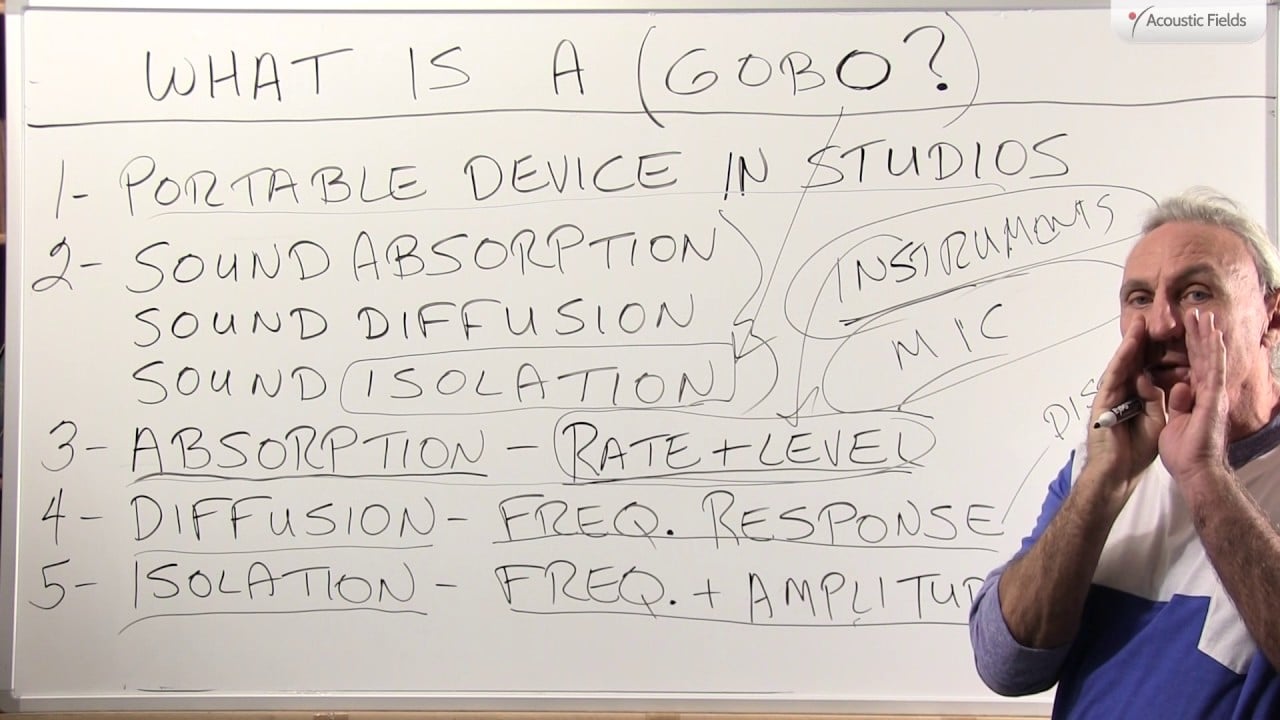I’m sure you’ve all heard this word in the literature, it’s really an interesting word, I mean the word doesn’t really fit what it does and there’s a lot of confusion about it. I was confused when I saw the word, I hear engineers use it all the time and I thought well is it a sound absorption device, is it a barrier, is it an isolation device, what is it you know. So when we look at the literature and we talk to people about it it’s a device in studios that has three functions I found from looking at most of my studios that I visited in Los Angeles, sound absorption, sound diffusion and sound isolation.
I think this feature and benefit of it (sound isolation) is probably the most critical and I think is usually associated with this word GOBO, but anyway three possibilities that this portable device can be used for and I think its main purpose is to isolate instruments and vocals from other microphones. So I think in the case of the word GOBO it’s more of a barrier technology and of course if it’s a barrier technology we’ve got to know the frequency and amplitude that we’re trying to isolate from and I see all kinds of these devices, I see some made out of foam, I see some that are really thick and heavy, you just don’t know really what’s going on and I’m wondering if the people that really design them do too.
So if it’s going to be an absorption device we have to first figure out what kind of absorption are we doing, Instruments, voice, what’s going on here? What’s the sound source that we’re trying to absorb from? So the bottom line here is if we’re going to design one of these GOBOS with absorption we’ve got to have a particular rating level to match our usage you know, instruments or voice. Diffusion is another part that we could put in there; we use this constantly in our vocal room. The vocal recordings of today they all sound alike because they’re done in small rooms and you get this boxed in sound effect from being in a small room which means that the wall surfaces are really close and narrow, hopefully the microphone can pick that difference up. So you get this boxy kind of a sound with your vocals in today’s recording, if you use diffusion you can open that up and you can expand it.
You can take this effect and open and wide out so the bottom line is we can use devices to have a direct impact on this but I think GOBOS in the really strictest meaning of the term is an isolation device and if it’s of isolation device it’s a barrier technology, we got to know what frequency and amplitude it’s isolating from. I see a lot of a drummer’s use these clear plastic shields, it’s kind of a GOBO, kind of a barrier technology, very dense because it’s thick plastic so it will isolate you know but you got to know what frequency and amplitude it’s isolating from if it’s going to be a barrier. So that’s a general breakdown of a GOBO and the three features that it can be used for.
—
This is an unedited transcript from our video series from Acoustic Fields. There will be some errors in grammar and sentence structure that occur during this translation process.
For complete understanding and comprehension, please view the video which is included in this text. For any additional information regarding this topic or others relating to room acoustics, please contact us directly at:
P: 520 – 392 – 9486








hi with the gobo is it possible to get professional vocal recordings in a room as big as an acoustically untreated bedroom?
F, No, there is no substitute for size and volume acoustically.